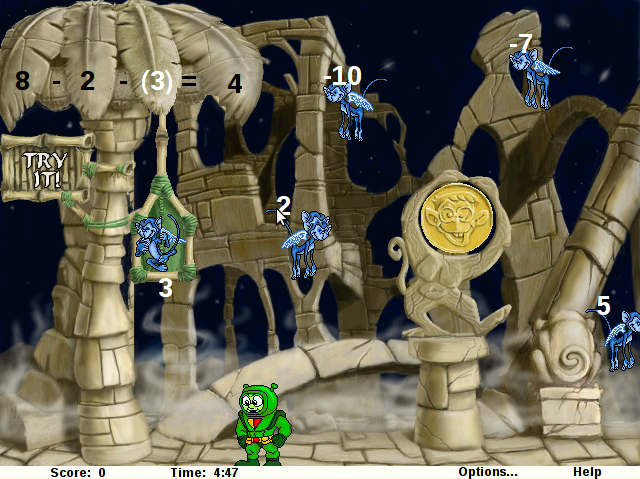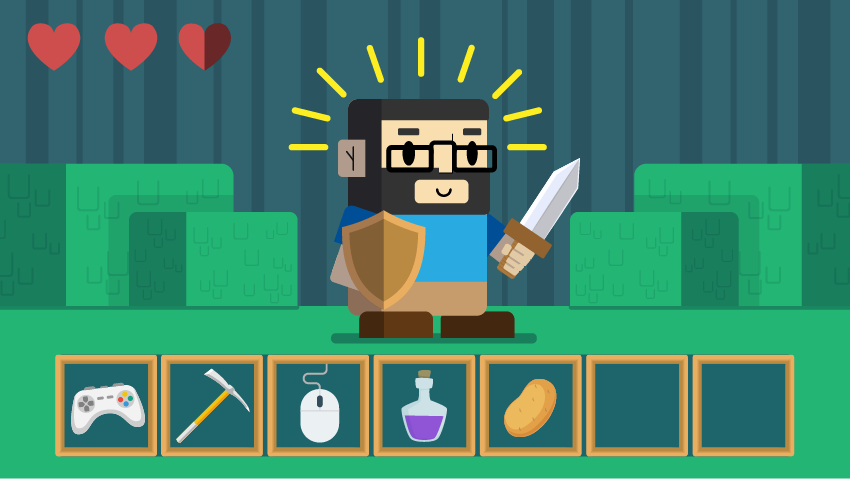As an avid gamer and a full-time eLearning developer, I’m always on the lookout for gamification concepts that we can incorporate into our training. While game-based learning is popular tool for training children, it can be just as powerful when used correctly for training adults. It’s important to know how to identify effective game mechanics and use them to create meaningful interactions for your learners. From modern games like Wordle and Jackbox to tried-and-true games like Mario and Tetris, there are plenty of opportunities to find inspiration! Let’s dive in!
When Did Learning Get Boring?
When I think back on my education, it’s not surprising that my favorite lessons were the ones when I didn’t even realize I was learning. We’ve pretty much all experienced gamified learning at some point during our lives. In school, we played science-themed Jeopardy, learned the alphabet and presidents by singing songs, prepped for tests using flash cards, and competed in everything from spelling bees to scholastic bowl to math contests. Perhaps, like me, you were lucky enough to get to play educational games like Mario Teaches Typing, Math Blaster, or the Magic School Bus games... to name a few (and show my age).
But when it comes to adult education, it seems like all of the fun got banned. There is a common misconception that games and playful thinking are only for children; that for adults, learning “should be serious because serious subjects take serious study”. In reality, game-based learning has been shown to increase learner engagement and knowledge retention across all age demographics.
In his book, “Play”, Dr. Stuart Brown addresses this phenomenon in a way that struck a chord with me. Imagine you were trying to learn to play the piano. With typical adult learning theory, you would first learn the principles behind the different scales, time signatures, and notes before you ever touched a piano. However, if you let a child sit in front of a piano and just start playing, they would learn pretty quickly through trial and error – what sounds good vs. bad, what changes when you press the pedals, what it sounds like when you hit multiple notes at the same time. They aren’t afraid to make mistakes, learn from it, and do it differently next time. It’s one of the reasons why kids often learn computer systems more quickly than adults.
Now imagine if we could recapture some of that magic as adults by creating learning experiences that engage our curiosity and desire to explore!
The Difference Between Good and Bad Game Mechanics
When gamification is done right, the learner will grow to master new concepts without even realizing they were learning the whole time. They will develop new skills, learn to think critically to solve problems, and commit the materials to memory... all without feeling the mental tax of typical training.
When I look back on Math Blaster or Mario Teaches Typing, I ask myself why those games worked so well for me. In both of these cases, I had to prove that I truly understood the concepts in order to complete a level in the game. I had to learn addition and subtraction before I could move onto multiplication and division. If I made too many mistakes, I would fail the level and wouldn’t be allowed to move onto the next concept. In contrast to those penalties, there were often bonuses for accuracy, speed, and stringing together combos. This meant that even when I passed the level, I could go back and try to beat my high score to truly MASTER the level.

In addition, we were learning in a classroom setting, which fostered competition amongst my peers. Each student was striving to be the best in the class – the fastest typing speed or the highest score on the leaderboard. These are all concepts that we see in the training industry – and they can be very successful when executed properly.
Your gamification elements should be used in a way that is meaningful to the learner. If the learner is awarded with achievements while they sit back and passively watch a module, it won’t have much impact on their learning. Conversely, if the gamification elements overpower the learning, then their attention will be solely focused on playing the game and their learning will suffer. The reason why the Math Blaster example shown above works so well is because the learning concepts are baked right into the game elements.
How Could Popular Games Influence the Way We Learn?
But enough talking about the past! Now that we’ve gone over the elements that make an educational game successful, let’s take a look at a couple of popular modern games and brainstorm a few game mechanics that could be leveraged for training purposes.
Wordle (click to play)
- “Word of the Day” Approach. Each day, players must try to guess the word of the day. For training, you could adjust the cadence to weekly or monthly – or even multiple questions each day. Instead of a 5-letter word, the prompt could be a customer service scenario or a way to communicate new products/processes.
- Social Learning. One of the biggest draws of Wordle is the social aspect. This innately fosters friendly competition and camaraderie amongst peers. You could further encourage this competition by introducing a leaderboard. Perhaps at the end of each quarter, the top 10 leaders win a prize.
- Streaks. Whenever a player successfully guesses the word, their streak increases. You could reward bonus points to players who keep coming back each day. As the saying goes, practice makes perfect. The more that a learner practices a concept, the more it will stick for them.
- Helps Build Neuroplasticity. Whenever you stimulate your brain with critical thinking, you open up more paths for continued learning. This is especially useful when done on a regular basis, and helps learners build out-of-the-box thinking.
- Fun, Simple, Challenging. The concept is fun and simple to play, yet it can be challenging. This helps students grow their problem-solving skills.
Jackbox
- Wacky Games. The fun and over-the-top style of these games would break out of the monotonous training that learners are used to. The silliness is intended to grab and hold their attention. We could use bright colors and wacky fonts to draw the learner’s attention.
- Easy to Learn. Most of the Jackbox games use minimal UI to reduce the learning curve. It’s easy for learners of various technical abilities to pick up and start using the game.
- Unlimited Creativity. Whether based on drawing or fill-in-the-blank answers, many of the games are open-ended and allow the player unlimited creativity within the confines of the rules. This type of creativity promotes out-of-the-box thinking. Using open-response answers in training can help foster critical thinking, which helps the learner build a stronger connection to their answer.
- Social Gaming. Most of the games are built to be played in a group setting. Perhaps you could create a voting system, where learners put in their answers in secret, and the rest of the group votes on their favorite responses.
- No Wrong Answers. With open-response answers and voting, there truly are no wrong answers (except blank answers)! This helps everyone feel invested in trying to provide the best answer they can, especially when coupled with the voting system.
These are just a few examples of how I took inspiration from a few popular games and could apply them to our training modules! But I’d love to hear from you!
Do you think that you could come up with gamification examples based on any of the popular games below? Let us know in the comments!
- Pokémon Go
- DuoLingo
- Trivial Pursuit / TriviaCrack
- Uno
- Monopoly
- Minecraft
- Go Fish
- Fortnite


